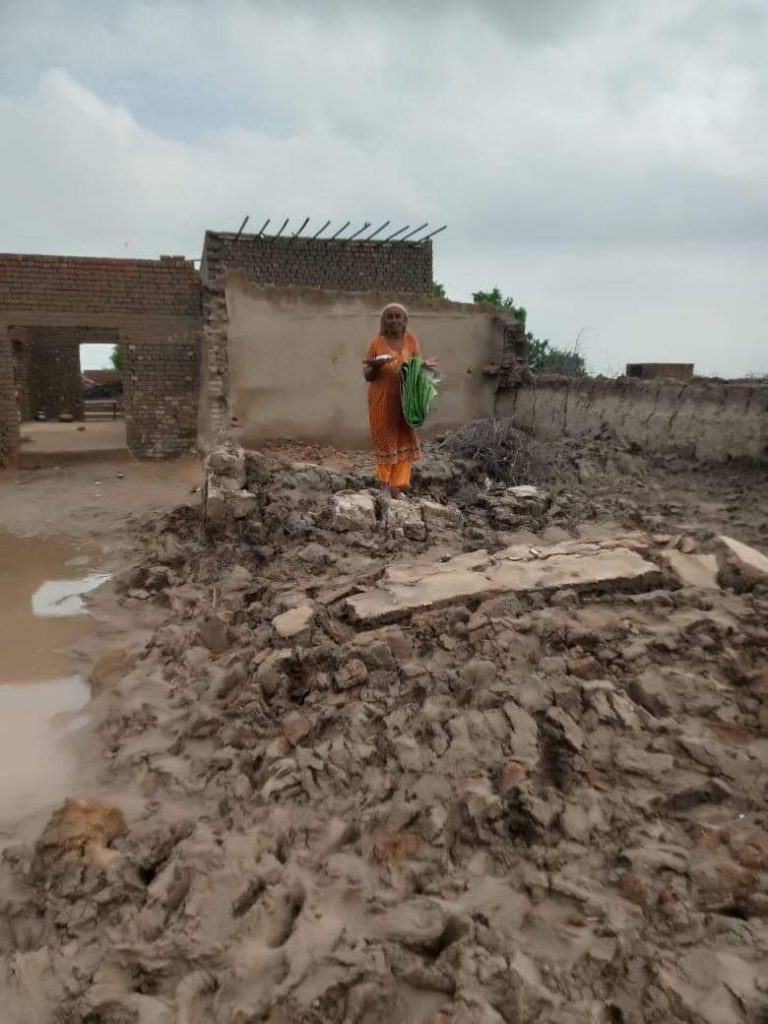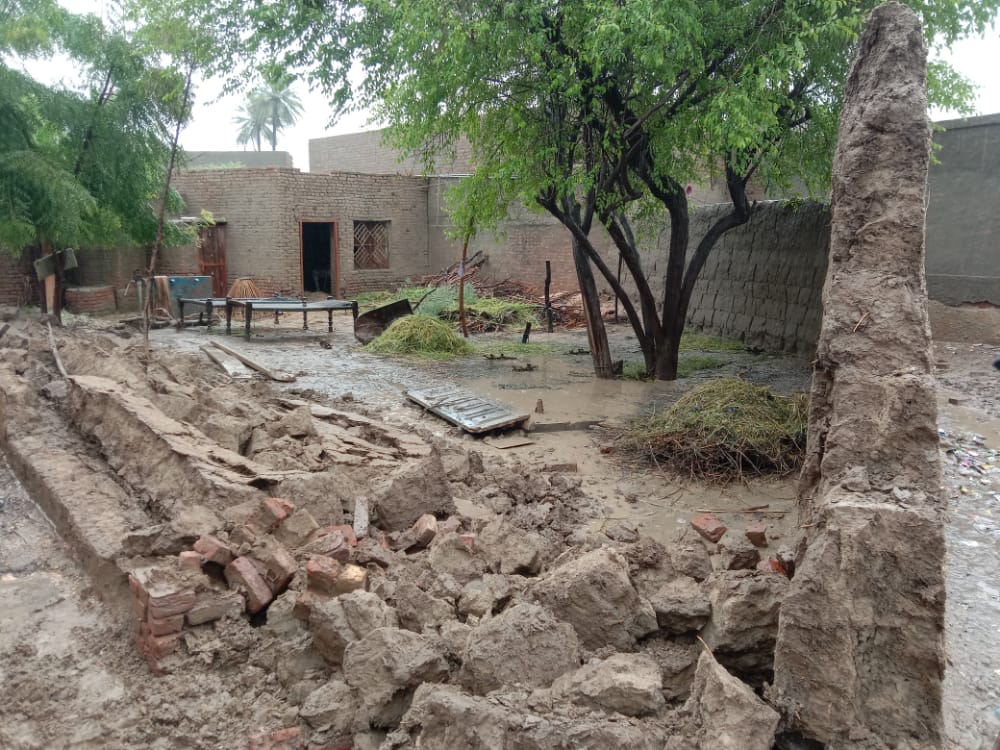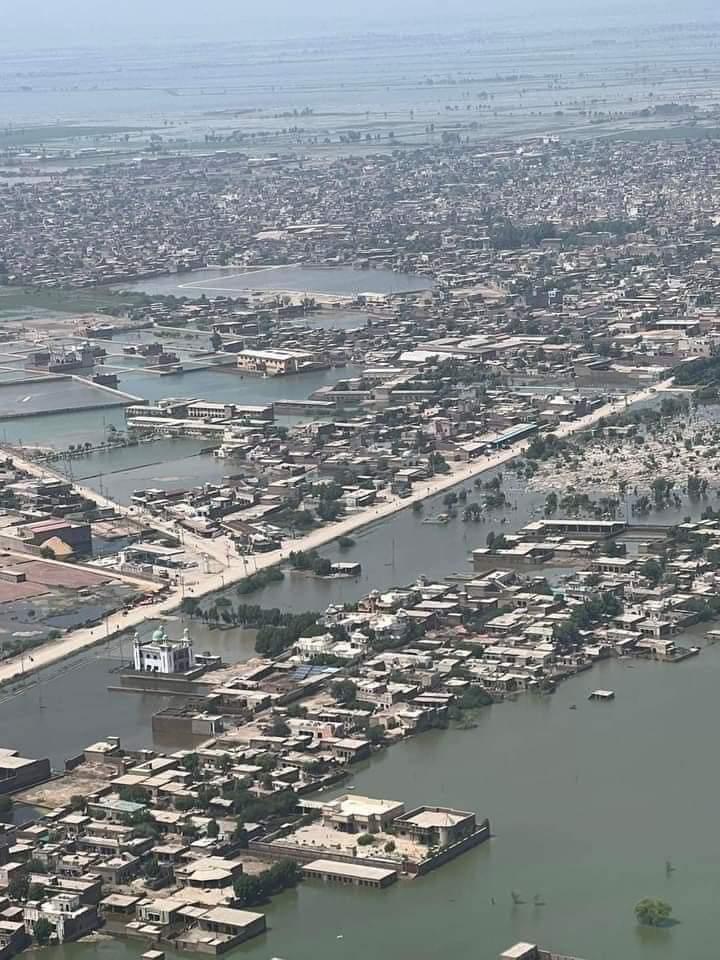
Our capacities to face, withstand and respond to the disasters have been reducing both in temporal and spatial terms
Muhammad Ehsan Leghari
Every disaster in Pakistan and Sindh has unfolded new dimensions of our physical, social, economic and political vulnerabilities. Right from fight against terrorism to coping with repetitive floods, our capacities to face, withstand and respond to these disasters have been reducing both in temporal and spatial terms. We need to rethink and modify the methods and strategies that we have been applying for managing disasters and crises.
We have come long way in terms of legislative, policy and institutional framework since 2005 devastating earthquake. We have National Disaster Management Commission headed by Prime Minister of Pakistan, National Disaster Management Authority (NDMA) at federal level, and Provincial Disaster Management Authority (PDMA) at province level. We have very weak District Disaster Management Authorities (DDMAs) just in papers and in relevant legal instruments. The legal framework and policies have not translated into robust and strong institutions. The local government and local bodies structure that is one of the key institutional instrument worldwide, has been kept under consistent experimenting and lost its importance, competence and role in the disaster management.
It is important that we reflect on the projects that are being or about to be implemented for post disaster reconstruction in Sindh especially housing.
The subsequent floods of 2010, 2011 and 2012 unpacked both the structural and non-structural problems. In disaster management, with the identification of problems, finding lasting solutions are relatively easy. But 2022 floods told different story – not learning from any of the previous floods and hanging on with old solution or doing entirely different from what was required.
With this background, it is important that we reflect on the projects that are being or about to be implemented for post disaster reconstruction in Sindh especially housing. The studies reveal that reconstruction of housing always require major part of targeted funding; almost half of the total requirements. Housing is big, complex, dynamic and multidimensional work. In 2005 earthquake reconstruction, out of 5.2 billion USD that were required for reconstruction, 44% were for housing.
World Bank alone has approved the projects of 1.7 billion dollars for different sectors in Sindh. The housing project has maximum allocation of 500 million US dollars. Government of Sindh has succeeded arranging 727 million USD, which come out to be Rupees 190 billion on today’s conversion rate. The total houses that have been fully or partially damaged have been assessed over 2 Million out of which more than 1.44 million are fully damaged and more than 650,000 are partially damaged. The extent of poverty is also evident from the fact that almost 80 percent of the houses that have been fully or partially damaged are Kacha houses and rest are Pakka construction. In first phase, Government of Sindh is focusing on construction/ repair of 461,000 houses. Government of Sindh is also looking for additional resources around 1350 million USD to achieve total target of 2 million houses. Even the scale of 461,000 houses is such a big activity! This scale of reconstruction has never been done before in Sindh and perhaps in Pakistan (as it surpasses the targets that were set and achieved for 2005 earthquake reconstruction).
The housing must result in better physical quality, neighborhood and social requirement, increased resilience, enhanced safety and security and reduced vulnerability.
There are generally three types of housing needs during and after a disaster: immediate shelters, temporary housing and permanent housing. Sindh has already passed the temporal phase for the temporary shelters. The stage of reconstruction and rehabilitation of houses is about to start. Government of Sindh has established “Sindh Peoples Housing for Flood Affectees” (SPHF) company under section 42, deployed efficient and reputable project management team and also in process of hiring of professionals for different positions. The strategic design of the project is quite inclusive. It is community driven with participation of affectees, involving social mobilization and process assistance and monitoring by reputable NGOs; and also third party monitoring and engineering support by consultants. GIS based geo-reference locations are to be put into practice. Five reputable Non-Governmental Organizations will be partnering with SPHF for making project inclusive and successful. NED University has provided assistance on developing few typical designs of houses that will be followed. It is important that the designs are made flexible so that local indigenous knowledge, culture and material can be incorporated into it.
 One of the key responsibility of the political leadership during and immediate after disaster is provide hope, determination and courage. Leaders uplift the marooned communities for better and secure tomorrow. In 2003 Balm Iran earthquake, 2004 Tsunami in Indian ocean, 2005 Katrina cyclone, 2011 Japan tsunami, the relevant political leaders promised and pledged to ‘build big, strong, better and safer!’. At Geneva, on 9 January 2023 in the International Conference on Climate Resilient Pakistan that was collectively arranged by Pakistan and the United Nations, Prime Minister Shehbaz Sharif and Foreign Minister Bilawal Bhutto Zardari showed firm resolution to build “Resilient Pakistan”. This is important for all the actions, program and projects that they result in establishing resilience, providing additional safety and strength to the communities and the built environment.
One of the key responsibility of the political leadership during and immediate after disaster is provide hope, determination and courage. Leaders uplift the marooned communities for better and secure tomorrow. In 2003 Balm Iran earthquake, 2004 Tsunami in Indian ocean, 2005 Katrina cyclone, 2011 Japan tsunami, the relevant political leaders promised and pledged to ‘build big, strong, better and safer!’. At Geneva, on 9 January 2023 in the International Conference on Climate Resilient Pakistan that was collectively arranged by Pakistan and the United Nations, Prime Minister Shehbaz Sharif and Foreign Minister Bilawal Bhutto Zardari showed firm resolution to build “Resilient Pakistan”. This is important for all the actions, program and projects that they result in establishing resilience, providing additional safety and strength to the communities and the built environment.
Community participation will be key to success. The bureaucracy in Pakistan and Sindh usually avoids involvement of communities.
The housing reconstruction after 2005 earthquake in Pakistan gave mixed results. Though the world appreciated the reconstruction efforts but few important issues were identified. Earthquake Reconstruction and Rehabilitation Authority (ERRA) being a federal institution, had almost all the bureaucracy and technocrats from the federation. The coordination and understanding of regional issues were bit weak for early years that improved with the time. The house construction was with different strategies for rural area and cities. The new building codes were required to be developed and approved by relevant authorities and those were to be reflected into the proposed master plans of cities. This was time taking process that hindered the progress for city areas. Whereas the progress for rural area was quite good as communities were involved at every stage. Communities were almost leading the process.
Community participation will be key to success. The people know their cultural and social setting, the houses have to be constructed accordingly. For NGOs that have been assigned the work of the project, they will have to focus extensive social mobilization and interaction with the communities. The bureaucracy in Pakistan and Sindh usually avoids involvement of communities. The social aspects of the project are to be understood by relevant project decision makers and they also need to go through some sessions of training on social mobilization. There are scores of housing projects in Turkey, India, Haiti, Sri Lanka, Indonesia and other countries that failed because of no or very little community participation. In many of these projects, local needs, cultural factors, the access to livelihood means and social setting were not considered. There was a quite big house reconstruction program after 2010 floods in Pakistan. A little is known about its progress and completion.
The construction should be contextualized in accordance with the targeted area and beneficiaries. Sindh has distinct geographical area of north, central, kacho, Kohistan, south (Laar), deltaic and coastal area, white desert and Thar. The house construction traditions, materials, design and cultural requirements are different for each area. The single construction solution for all will not work. The housing must result in better physical quality, neighborhood and social requirement, increased resilience, enhanced safety and security and reduced vulnerability. There are cost-effective solutions and good low cost construction models developed by NGOs and experts in Sindh and Pakistan. These should be referred.
Many researches and case studies reveal that governance that ensures the establishment of transparent and accountable systems, leads with better results in both qualitative and quantitative terms. The transparent governance of reconstruction has been indicated most critical success factor in many studies done on housing. Government of Pakistan and Sindh have already pledged in the Geneva conference to ensure transparent system. If practiced, open, just and competitive procurement management, can make it easy to achieve the transparency.
The legislation and policy dimensions for disaster risk reduction and post disaster reconstruction are relatively better in Pakistan. Pakistan’s Resilient Recovery, Rehabilitation, and Reconstruction Framework (4RF) have been approved and published in first week of January 2023. The translation of actions related to 4RF by implementing departments and ministries, is something that need to be worked out in details. The concepts of Resilience or/and Building Back Better and Safer are also new for many of decision-making bureaucrats who will be leading the public sector institutions and departments. It is important that detailed strategy and action plan are also developed for 4RF understanding and implementation.
 Effective Coordination and communication are very important for all the initiatives of public sector. The public sector departments work in silos and usually avoid to coordinate and evade building nexus. The complexity of the projects and dynamic nature of work make the effective coordination and clear communication as pre-requisite for achieving resilience and project targets. The coordination and communication action plan with clear information about who will be doing what, when, how and how much, and where is to be prepared in succinct way. It must provide clarity for means of coordination and communication in terms of meeting, official project steering committees, reviews and planning. The international case studies have well documented evidences about many failed projects that lost efforts, money and resources because of lack of communication and coordination.
Effective Coordination and communication are very important for all the initiatives of public sector. The public sector departments work in silos and usually avoid to coordinate and evade building nexus. The complexity of the projects and dynamic nature of work make the effective coordination and clear communication as pre-requisite for achieving resilience and project targets. The coordination and communication action plan with clear information about who will be doing what, when, how and how much, and where is to be prepared in succinct way. It must provide clarity for means of coordination and communication in terms of meeting, official project steering committees, reviews and planning. The international case studies have well documented evidences about many failed projects that lost efforts, money and resources because of lack of communication and coordination.
Putting right and competent team for the projects and subproject cannot be overemphasized. This is so critical for the make and break of the project(s). The project leaders and managers have to be pragmatic, transformational and team builders. They can encompass social, engineering, procurement, financial analytic and local knowledge and experience; and build the team in a way that translate complex works into streamlined actions. This is to be fully and clearly supported by political leadership.
For the clarity of the procedure, the comprehensive Beneficiary identification process, land-right / registry manual may be developed.
The rights to the land on which houses will be constructed is a vital issue along with the identification of the correct beneficiaries. One important step that government of Sindh has assured during the approval process of housing project by relevant fora that in all cases including no registry, sitting on the land of landlord or otherwise, land title will be given to the beneficiaries so that they could own the constructed house . Bilawal Bhutto Zardari has also promised that the land title will be given in the name of women. This is important step for women empowerment, if translated into action.
For the clarity of the procedure, the comprehensive Beneficiary identification process, land-right / registry manual may be developed.
The logistic and supply chain of the material is an area of concern in housing projects. In the days of maximum demand, the rates of materials can rise substantially. The access to construction sites, villages for house construction have to be ensured by rehabilitation of road network at urgent basis. The quality control and also stabilization of rates can be achieved by government through some strategic work like bulk supply of materials and linking beneficiaries with market. The role of implementing NGOs is important to work on developing and enhancing social capital in the targeted area so that beneficiary is able to construct or restore house within the given budget with the community support.
The financial management for 727 million US dollars and arranging the additional 1350 million USD are crucial both for the transparency and assurance of cashflow so that targeted houses are reconstructed or rehabilitated. For permanent house construction, though it will be politically beneficial to move on it very fast; but this hassle should not be done by compromising the resilience and quality. It must be understood that reconstruction takes time of more than 3 to 4 years. People in Pakistan get chance of construction house when they get commutation on retirement, women sell their gold and other assets to make it happen! Thus, a safe and strong house which can withstand the disasters should be the ultimate target not the haste that can only result in achieving number rather than quality.
__________________
The writer is Development and Program Management professional. He can be accessed at ehsanleghari@gmail.com